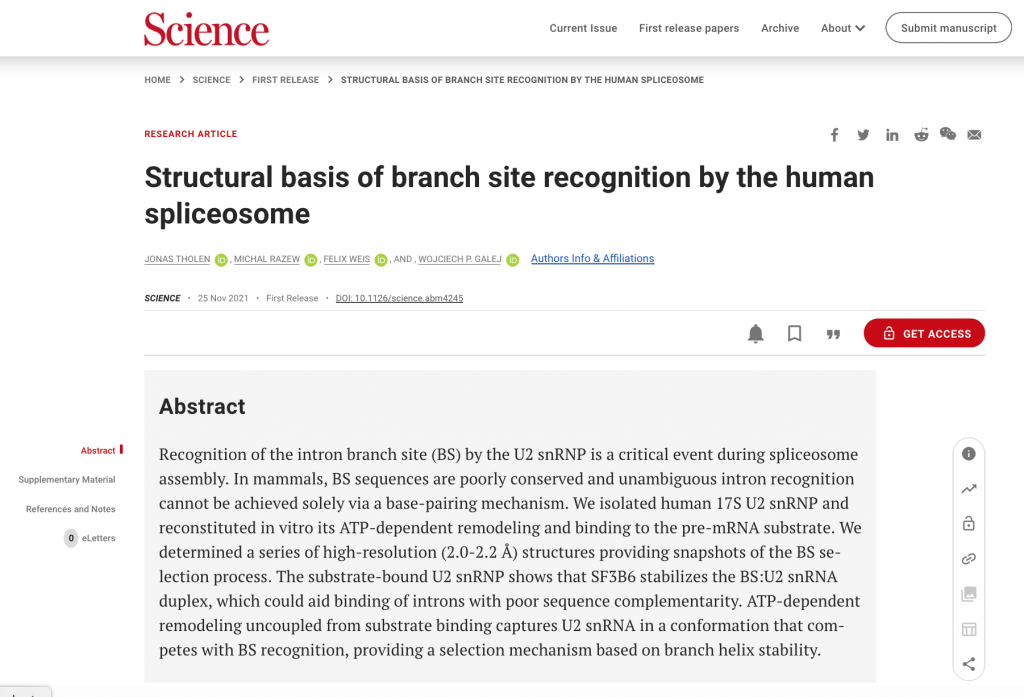Structure of the human U2 snRNP
Our new paper on the structure of the human U2 snRNP was just published in Science !
In human cells protein-coding genetic information is punctuated with non-coding segments – Introns, which need to be removed from pre-mRNA by the spliceosome. U2 snRNP recognises a conserved position within the intron, so called branch site.
Jonas Tholen, PhD student in our group, established a new CRISPR/Cas9-based method to specifically purify U2 snRNP complexes directly from human cells and reconstituted in vitro branch site recognition reaction. We identified two novel splicing complexes and determined a series of structures providing snapshots of the intron recognition process. cryo-EM reconstructions were determined at close to 2.0 Å resolution in the best parts, first time for any splicing complex.
Our data revealed how a small protein – SF3B6 stabilises branch helix. This has important implications for introns recognition in species which dont have strong branch-site signals (i.e. humans). SF3B6 enforces helical geometry of the U2 snRNA and may facilitate binding of pre-mRNAs without perfect sequence complementarity. ATP-dependent remodelling decoupled from the pre-mRNA binding revealed a new conformation of the U2 snRNA, which competes directly with the pre-mRNA substrate and provided a mechanism for the branch site stability selection.
